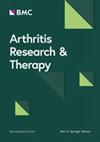严重难治性系统性红斑狼疮试点定义的患病率和结果:来自亚太多国队列的观察
IF 4.6
2区 医学
Q1 Medicine
引用次数: 0
摘要
新兴疗法有可能用于严重难治性系统性红斑狼疮(srSLE)患者,但srSLE没有统一的定义。我们评估了一个实验性的srSLE定义,以评估一组疾病活动和治疗阈值是否可以识别预后不良的患者。对2013年至2020年间前瞻性收集的13个国家SLE纵向队列数据进行了分析。srSLE的定义是,尽管患者在指数和前一次就诊时至少联合使用糖皮质激素(GC)和免疫抑制剂(IS),但仍处于高疾病活动性(SLEDAI-2K≥10)。与srSLE访视指数同步,我们评估了12个月(m)的疾病活动性、药物使用和治疗-目标(T2T)终点达到情况。在研究的3744例患者中,在1810次就诊中,578例(14%)患有srSLE。srSLE指数访视时SLEDAI-2K的中位数[IQR]为12[10,14],在6m和12m时降至6[4,10]。在所有随访时间点,大多数患者仍在联合使用抗疟药、GC和IS。指标访视时中位[IQR] GC剂量为10 [5,20]mg/天;在6米时减少到8毫克[5.0,12.9],在12米时减少到5毫克[5.0,10.0]。不到四分之一的患者达到了LLDAS,只有1%的患者在12个月内达到了无gc缓解。srSLE的定义草案明确与不良预后相关。有必要评估多个阈值来定义srSLE及其结果。本文章由计算机程序翻译,如有差异,请以英文原文为准。
Prevalence and outcomes of a pilot definition of severe refractory systemic lupus erythematosus: observations from a multinational Asia-Pacific cohort
Emerging therapies have the potential to be used in patients with severe refractory systemic lupus erythematosus (srSLE), but no agreed definition of srSLE exists. We evaluated a pilot srSLE definition to assess whether a set of disease activity and treatment thresholds could identify patients with poor outcomes. Data from a 13-country longitudinal SLE cohort, collected prospectively between 2013 and 2020 were analysed. srSLE was defined if a patient was in high disease activity (SLEDAI-2K ≥ 10) despite combination use of at least glucocorticoids (GC) and immunosuppressants (IS) at both the index and preceding visit. Synchronised to the index srSLE visit, we assessed disease activity, medication use and treat-to-target (T2T) endpoint attainment over 12 months (m). Of 3,744 patients studied, 578 (14%) had srSLE, in 1,810 visits. The median [IQR] SLEDAI-2K at the srSLE index visit was 12 [10, 14], which decreased to 6 [4, 10] at 6m and 12m. Most patients remained on combination anti-malarial, GC, and IS at all follow-up time points. The median [IQR] GC dose at the index visit was 10 [5, 20] mg/day; this reduced to 8 mg [5.0, 12.9] at 6m and 5 mg [5.0, 10.0] at 12m. Less than a quarter of patients attained LLDAS and only 1% attained GC-free remission over 12 months. A draft definition of srSLE was clearly associated with poor outcomes. Work to evaluate multiple thresholds with which to define srSLE, and their outcomes, is warranted.
求助全文
通过发布文献求助,成功后即可免费获取论文全文。
去求助
来源期刊

Arthritis Research & Therapy
RHEUMATOLOGY-
CiteScore
8.60
自引率
2.00%
发文量
261
审稿时长
14 weeks
期刊介绍:
Established in 1999, Arthritis Research and Therapy is an international, open access, peer-reviewed journal, publishing original articles in the area of musculoskeletal research and therapy as well as, reviews, commentaries and reports. A major focus of the journal is on the immunologic processes leading to inflammation, damage and repair as they relate to autoimmune rheumatic and musculoskeletal conditions, and which inform the translation of this knowledge into advances in clinical care. Original basic, translational and clinical research is considered for publication along with results of early and late phase therapeutic trials, especially as they pertain to the underpinning science that informs clinical observations in interventional studies.
 求助内容:
求助内容: 应助结果提醒方式:
应助结果提醒方式:


